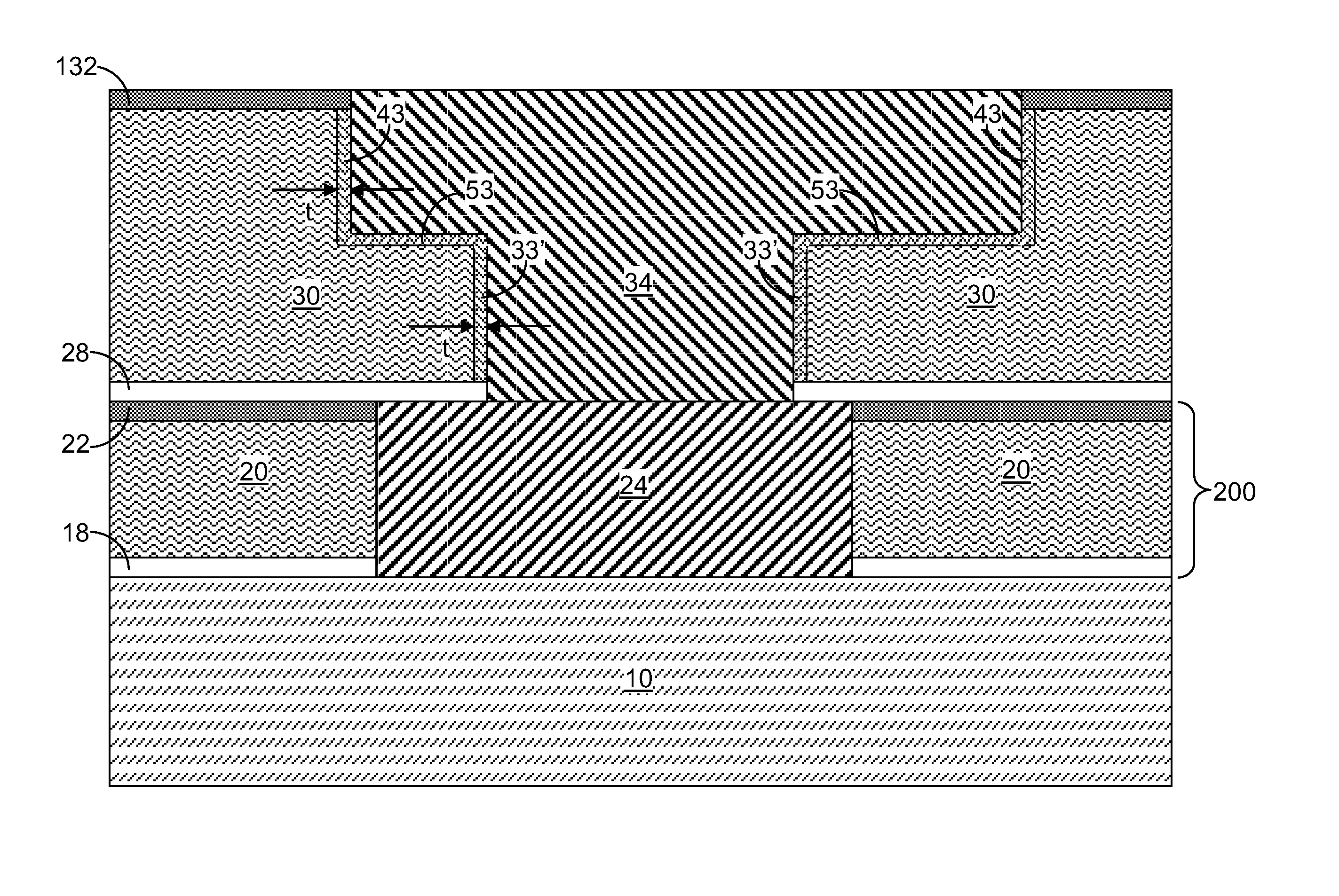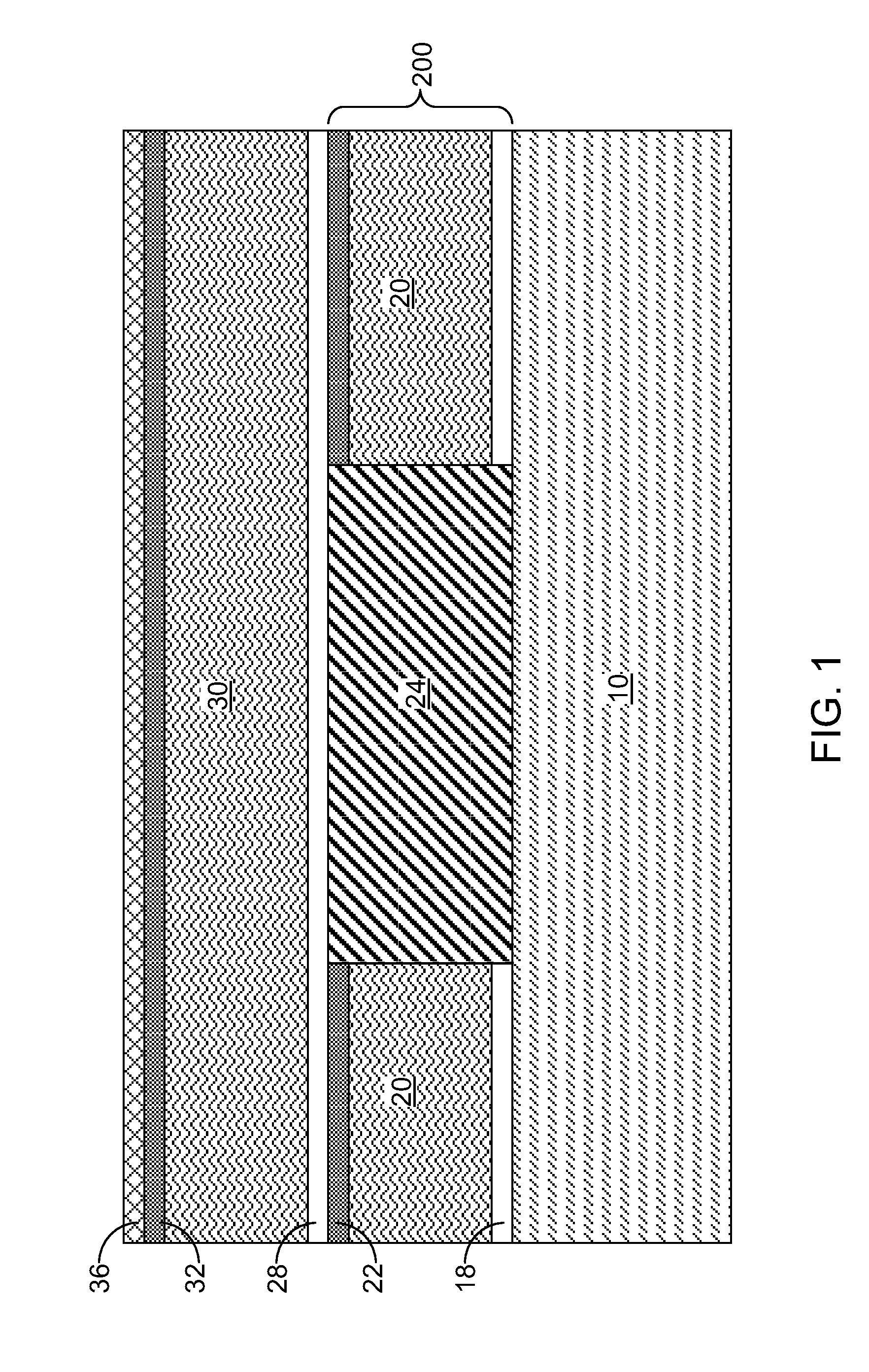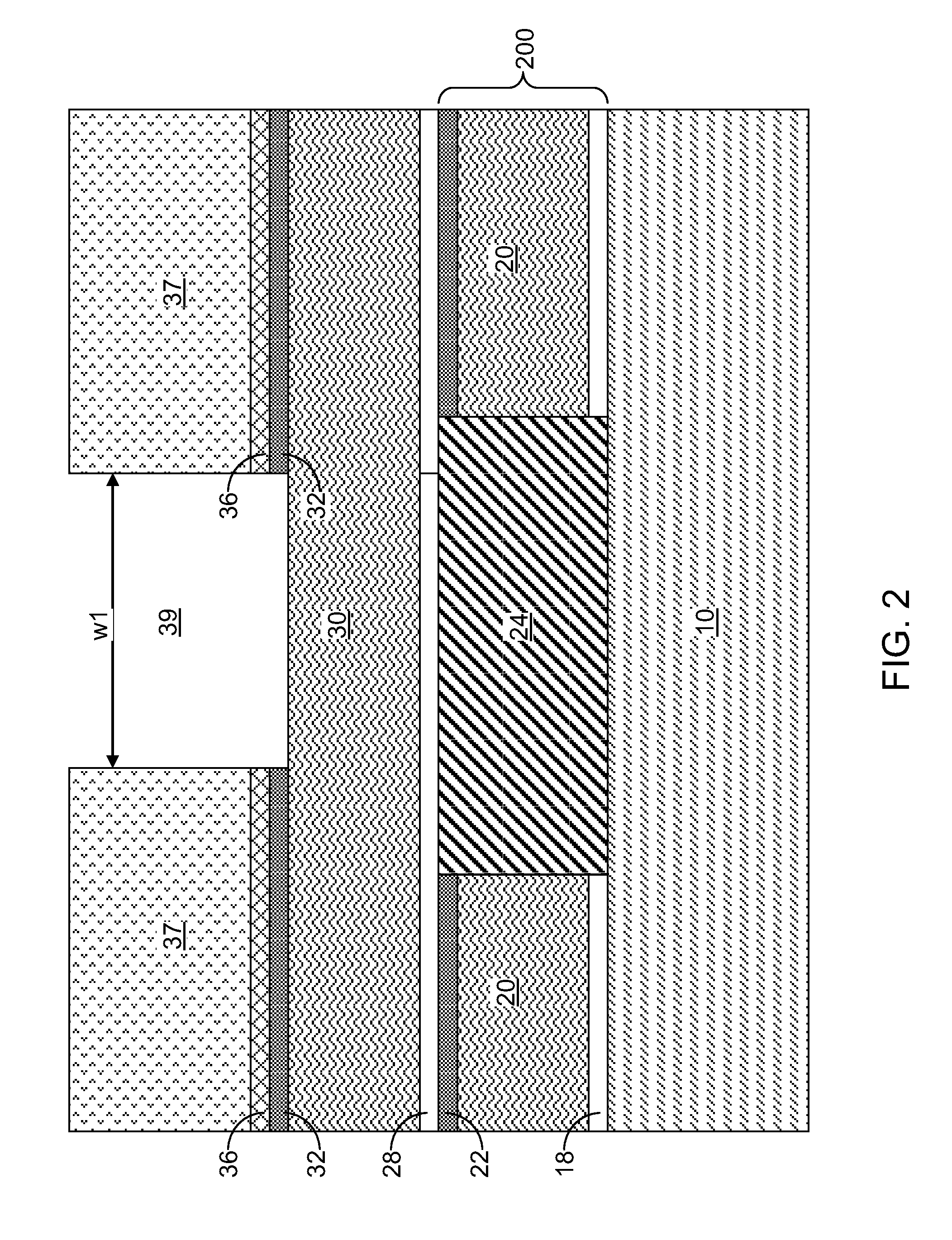Low energy etch process for nitrogen-containing dielectric layer
- Summary
- Abstract
- Description
- Claims
- Application Information
AI Technical Summary
Benefits of technology
Problems solved by technology
Method used
Image
Examples
first embodiment
[0025]Referring to FIG. 1, a first exemplary structure according to the present disclosure includes a vertical material stack. The vertical material stack includes a substrate 10, an optional underling metal interconnect level structure 200, a nitrogen-containing dielectric layer 28, an interconnect level dielectric layer 30, a dielectric cap layer 32, and a metallic hard mask layer 36.
[0026]The substrate 10 can include a semiconductor material, an insulator material, a conductive material, or a combination thereof. The semiconductor material can be an elemental semiconductor material such as silicon, germanium, carbon, or an alloy thereof, a III-V compound semiconductor material, a II-VI compound semiconductor material, or any combination or stack thereof. The semiconductor material can be doped with electrical dopants such as B, Ga, In, P, As, and Sb. Multiple semiconductor materials can be present in the substrate. The insulator material can be doped or undoped silicon oxide, dop...
second embodiment
[0067]Referring to FIG. 9, a second exemplary structure according to the present disclosure can be derived from the first exemplary structure of FIG. 1, and by modifying the processing steps of FIG. 2 such that the cavity 31 does not extend to the top surface of the nitrogen-including dielectric layer 28 at the end of the pattern transfer from the photoresist 37 to the upper portion of the interconnect level dielectric layer 30. The cavity 31 as formed within the second exemplary structure is herein referred to as a via cavity 31′. Thus, there is a finite distance between the bottom surface of the via cavity 31′ and the top surface of the nitrogen-containing dielectric layer 28 after removal of the photoresist 37 at the processing step corresponding to the processing step of FIG. 3. The vertical distance between the topmost surface of the interconnect level dielectric layer 30 and the bottom surface of the via cavity 31′ can be from 15% to 85% of the vertical distance between the to...
PUM
 Login to View More
Login to View More Abstract
Description
Claims
Application Information
 Login to View More
Login to View More - R&D
- Intellectual Property
- Life Sciences
- Materials
- Tech Scout
- Unparalleled Data Quality
- Higher Quality Content
- 60% Fewer Hallucinations
Browse by: Latest US Patents, China's latest patents, Technical Efficacy Thesaurus, Application Domain, Technology Topic, Popular Technical Reports.
© 2025 PatSnap. All rights reserved.Legal|Privacy policy|Modern Slavery Act Transparency Statement|Sitemap|About US| Contact US: help@patsnap.com



